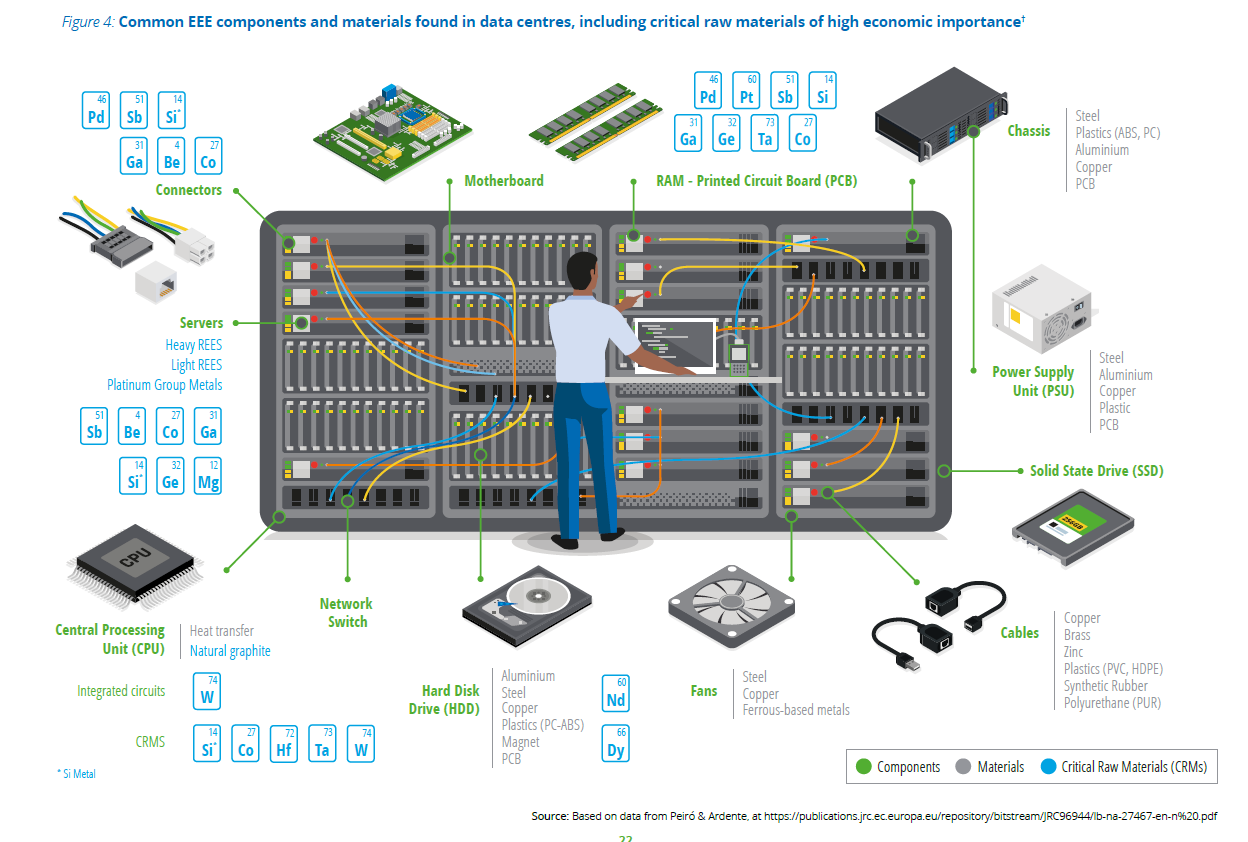The main Components of a Data Centre

A data center is a complex facility comprised of various components that work together to ensure the reliable operation of IT infrastructure and services.
The main components of a Data Center include:

Servers:
- Servers are the primary computing devices that process and store data. They run applications, manage databases, and handle various tasks. Servers come in different forms, including rack-mounted servers, blade servers, and tower servers.
Storage Systems:
- Storage systems include hard drives, solid-state drives (SSDs), and other storage devices that store data. They can be organized into storage arrays for redundancy and performance optimization.
Networking Equipment:
- Networking components include routers, switches, firewalls, and load balancers. They enable data to flow efficiently and securely between servers, devices, and external networks.
Cooling Systems:
- Cooling systems maintain optimal temperatures within the data center to prevent hardware overheating. This includes air conditioning, precision cooling units, and hot/cold aisle containment.
Power Distribution Units (PDUs):
- PDUs distribute electrical power to servers and equipment in the data center. They can also provide monitoring and remote management capabilities.
Uninterruptible Power Supply (UPS):
- UPS systems provide backup power in case of electrical outages, allowing servers and equipment to remain operational until generators can start.
Generators:
- Generators offer backup power for extended periods if the main power source is disrupted. They are crucial for maintaining data center operations during longer power outages.
Fire Suppression and Detection Systems:
- These systems include fire alarms, smoke detectors, and fire suppression mechanisms to protect the data center from fire-related hazards.
Physical Security:
- Physical security measures include access controls, security cameras, biometric authentication, and secure entry points to prevent unauthorized access.
Monitoring and Management Software:
- Data centers use software tools for monitoring hardware health, performance, and environmental conditions. This software helps prevent downtime and optimize resource utilization.
Cabling Infrastructure:
- Cabling systems organize and connect servers, networking equipment, and other devices. Proper cable management ensures efficient airflow and ease of maintenance.
Backup and Recovery Systems:
- Data centers often have backup and recovery solutions to protect data in case of hardware failures, data corruption, or other incidents.
Racks and Cabinets:
- Servers and networking equipment are typically installed in racks and cabinets, which provide a structured and organized environment for the hardware.
Security Measures:
- Data centers employ physical security measures such as surveillance cameras, access controls, and biometric authentication to prevent unauthorized access.
Environmental Monitoring:
- Sensors monitor temperature, humidity, and other environmental conditions to ensure the optimal functioning of hardware.
Redundancy Systems:
- Redundancy is built into data centers to ensure high availability. This includes redundant power supplies, cooling systems, network paths, and hardware components.
Network Connectivity:
- Data centers are connected to external networks and the internet through high-speed network connections provided by ISPs and network carriers.
These components work together to create a reliable and efficient environment for housing IT infrastructure, supporting critical applications, and ensuring data security and availability.
Thank You

